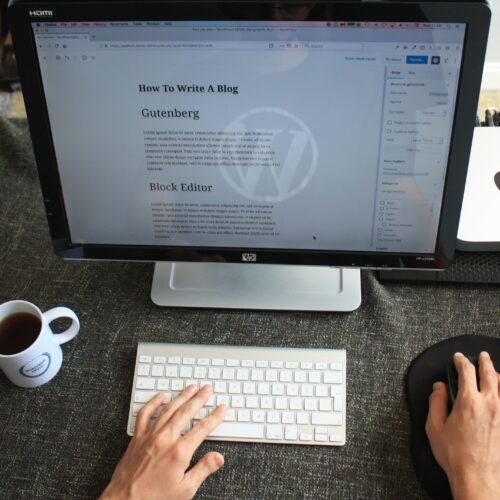For businesses and organizations in the digital age, having an attractive website that provides a positive user experience is more than just important – it’s essential. In this post, we’ll explore some tips for creating a great website that engages your audience and achieves your goals.
1. Use Color Wisely
Color is a powerful tool in web design – it can spark emotion and bring your website to life. However, using too many colors or the wrong colors can be overwhelming and distracting. To ensure color plays an effective role, be mindful of the tone and personality associated with your brand when choosing your color palette. Make use of visual hierarchy by highlighting key elements with contrasting colors for maximum impact. Don’t forget functional accessibility either; check that everyone has an equal opportunity to experience the full power of creative color choice.
2. Choose Appropriate Typography
Typography is a fundamental element for engaging readers and enhancing your website’s style. Your font choices can impact the readability and visual appeal of your website. When selecting fonts, consider how well it reflects your brand’s aesthetic and choose no more than three to keep visual consistency across all pages. We always recommend one font be a sans serif, as tests have shown that sans serif fonts are the easiest to read on websites. Remember that legibility issues can impair user experience on various screens – always test before launch.
3. Prioritize User Experience
An effective website should be designed with the user in mind. Taking into account a positive user experience (UX) from beginning to end helps customers better understand and engage with your brand, creating an unforgettable journey for every visitor. To achieve this, consider the following:
- Navigation: Make sure your website is easy to navigate with clear, concise menus and breadcrumbs.
- Speed: Optimize your website for fast loading times, as slow loading times can lead to a poor user experience.
- Mobile responsiveness: Make sure your website is optimized for mobile devices, as more and more users are accessing the internet on their smartphones and tablets.
- Accessibility: Ensure that your website is accessible to all users, including those with disabilities.
4. Create a Consistent Layout
Achieving a consistent layout for your website can be the difference between creating an enjoyable user experience and one that leaves visitors feeling confused or overwhelmed. When designing your website, use a grid system to create a balanced layout, which will allow viewers to intuitively move around the site. Keep in mind the visual hierarchy and use whitespace to separate content and make it easier to read.
5. Use High-Quality Images
Create visual interest on your website with high-quality, relevant images. Consider images as one more way to tell the story about how the people you serve transform. Use meaningful visuals that add value for your viewers and allow them to connect with what you’re offering and how it will help them. Don’t forget to optimize your images for web use to prevent slow loading times.
We all want our websites to make a statement and help us make our business a success. To do this, effective web design is key. Using the right colors, typography and images sets the stage for success. Prioritizing user experience ensures people will engage with your website in meaningful ways. For maximum impact across platforms, testing on multiple devices before launch is crucial – making sure your website shines no matter what device you’re on.
Image from Unsplash








